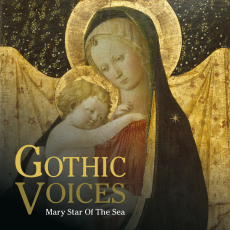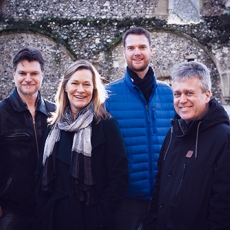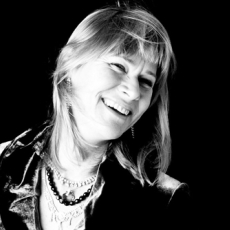Gothic Voices - Mary Star Of The Sea - MusicWeb International
This CD takes its title from the plainchant hymn Ave Maris Stella - Hail, star of the sea / loving mother of God / and ever Virgin / blessed gate of Heaven". Just one example of a setting of this text is given, that by John Dunstaple (or Dunstable) and that is set in alternatim. Other texts are related both to the Virgin and to the ideas of service and motherhood.
Gothic Voices you will recall, first came to knowledge as the a cappella early music group under Christopher Page who gave us ‘A Feather on the Breath of God' - the music of Hildegard of Bingen; that was in 1982. Since then Page and his group went on to record some twenty discs, all on Hyperion until Page felt that he needed to concentrate on other things. Much later the group made two discs for Avie. Now they have moved to Linn, in a way a more natural home for their new style which is, not to be just a museum group but to juxtapose pieces which will contrast and complement the staple medieval fare for which they are so renowned.
Of the original singers none survive in the current group. Catherine King took over, as it were from Margaret Philpot more than a decade ago; their respective timbres are not dissimilar. Stephen Charlesworth, the baritone can be heard for example on the 1991 disc ‘Lancaster and Valois'. Julian Podger can be found on ‘A Study of Love' (1992) and Steven Harrold, amongst other projects on ‘The Spirits of England and France' Volume 2 (1996). In other words all four singers were brought up in the Page regime so that there is a genuine sense that the tradition continues.
Another tradition is the finding of a beautiful medieval image for the cover. Here it is a memorable one: virgin and child by Fra Filippo Lippi (c.1409-1468). Lippi was contemporary with Dunstaple and Richard Smert.
Especially striking on this disc are the works by the American Joanne Metcalf and by the Liverpool-born Andrew Smith. Metcalf's four tracks are extracts from a larger, ten-movement work entitled Il nome del bel fior which in movement 1 uses just a single word - ‘Maria' for solo, single voice (Catherine King) then for track 3 uses only the ‘o' and ‘a' vowels and the words ‘Ave Maris Stella' for two male voices. Track 5 again uses only ‘Maria' for the four voices and track 11 sets a text by Dante in Italian from his ‘Paradiso' - a vision of the Virgin Mary. The latter is in a most beguiling yet subtly dissonant language but all informed by an understanding of medieval polyphony. This, alongside seven pieces of medieval music forms part of the first part of the CD.
The second part uses Andrew Smith's work, the 14th Century text ‘Stond well Moder under Rode'. This was set monophonically c. 1350 and is a very moving, colloquy between the Virgin and Christ on the Cross. It is performed appropriately here by a female voice and a male voice. Smith's four-part setting is positioned across two widely-spaced tracks and I'm not sure it benefits from that. I would suggest that you programme them, at least once, side by side to get the cumulative effect of this deeply moving and sensitive setting.
Hymns, motets and carols dating from the 12th-15th centuries, constitute two-thirds of the CD. They have related texts and fall into forms typical of the period. Smert's Ave decus saeculi and the anonymous Pia mater salvatoris follow the ‘carol' pattern which includes a refrain set for three voices and the verses for two. The English descant style is represented by Stella maris illustrans omnia. There is plainchant, Gaude, Maria Virgo and a Worcester piece demonstrating a primitive hocketing as in the oft-recorded, polytextual Alleluia psallat / Alleluia concinat - Virga Jesu. There is also an example of how secular and sacred texts often combine as in the Robin and Marian melody with the text Dou way Robyn in the lower voice and the Sancta mater gratiae over it.
Gothic Voices are still a formidable force. Indeed I have enjoyed their ‘sound' more on this disc than I have for some time. They seem to be more relaxed and allow the music to come to them instead of forcing it into a straitjacket. The recording is unproblematic and beautifully spaced.
There is a clear and helpful essay by Julian Podger and all texts are given and well translated. There are also colour photographs and biographies.


